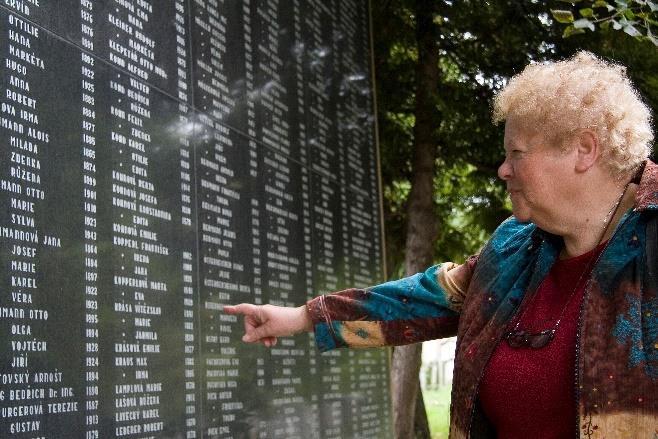
2 minute read
Chanukah 1942
from CTJC Chanukah bulletin 2020
by CTJC
Jane Liddell-King
The first candle lighting of Chanukah 1942 should have taken place on 4th December. Instead of gathering in their homes to share latkes, the 606 members of the Jewish community of the Czech town of Pardubice were packing. Parents encouraged children and children were unusually quiet. On 9th December, the entire community was deported to the garrison town of Terezín, which had been turned into a concentration camp. The train stopped at Bohusivice and the passengers had to drag the permitted 50kg of luggage the last icy 3 kilometres. An 82 year old woman slipped and died.
Advertisement
Of those 606 deportees, just 24 survived and returned to Pardubice. Why should we remember them?
In 1942, the Nazi authority in charge of “the Jewish Question”, the Zentralstelle für jüdische Auswanderung (the Central Office for Jewish Emigration), ordered the communities in Bohemia and Moravia to send all of their liturgical items to a newly established Jüdisches Zentralmuseum in Prague. This museum had been founded by members of the Prague Jewish community anxious to protect the belongings of those who had been deported to concentration camps. Some 1,800 scrolls joined the collection, including scrolls from Pardubice. In the 1950s, the remarkable director of the museum, Hana Volavkova, arranged for the scrolls to be housed in the dilapidated Michle Synagogue outside Prague. But Hana was forced to leave the museum and the scrolls became a source of ready cash for the country’s Soviet authorities. Consequently, in 1965, three British Jews concluded a deal and brought 1,564 deteriorating scrolls to the Westminster Synagogue in London. There, over the next 25 years, Sofer (scribe) David Brand painstakingly set about their restoration. All those that could be used have been distributed across the world, and number 689 came to Cambridge.
In December, 2005, Beth Shalom Reform Synagogue used this Torah scroll, on loan from the CJRA, for the first time. Professor Melissa Lane spoke unforgettably of its history. Following the expulsion of Jews from Spain in 1492, the community had settled in Pardubice and thrived. I was immediately inspired to visit the town.
Photographer Marion Davies agreed to accompany me. Despite warnings that our search for survivors would prove fruitless, within hours of our landing, a crumpled address book belonging to an elderly woman in Prague yielded two names from Pardubice. Consequently, we met a handful of survivors who, over months, shared their unique stories with us. Among these was Eliška, who was 12 at the time of the 1942 deportation. She recalled her father, Erwin Weiss, staggering from the train at Auschwitz and saying “Look at those chimneys, flames are coming out of them. There are definitely some factories and no one is even bombing them”. Then he was ordered to join the queue for the gas chambers. Eliška and her mother were moved on to Birkenau, Bergen Belsen, and to a labour camp near Dessau where they caught typhoid. Then back to Terezín where they slowly recovered. Now her story and the stories of the other Jews from Pardubice attest to the remarkable second life of scroll number 689, hundreds of miles away in Cambridge.
Eliška Levinskáat the Holocaust Monument, Pardubice ©Marion Davies 2020





